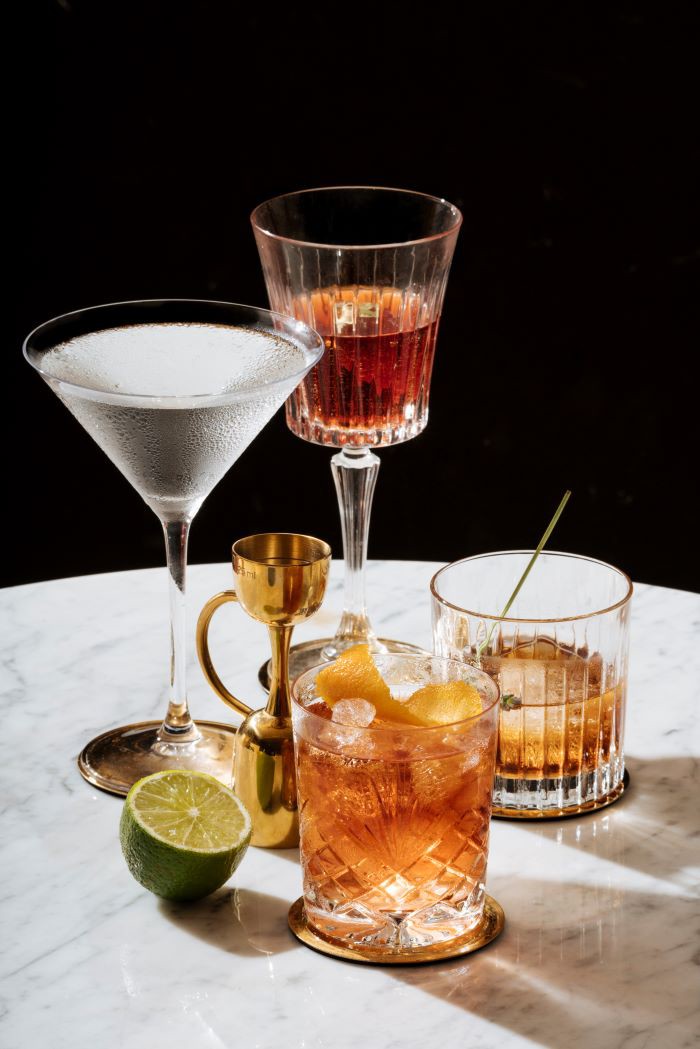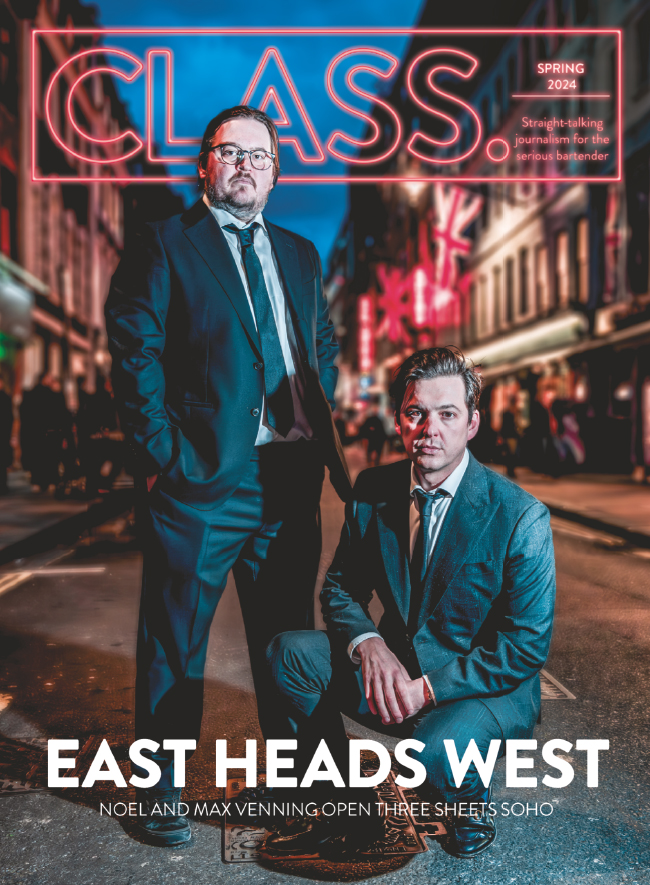
Classic cocktails are as relevant now as they’ve ever been, says Hamish Smith, but is their creation slowing?
Quite often, classic cocktails are misunderstood, thought of, as they sometimes are, as museum pieces, embalmed for eternity from the point of creation. Instead, think of them as stories around campfires or clapping games in schools; they have an ethereal sort of existence, amorphously evolving over time.
Where classic cocktails are documented in books, on websites, or passed from bartender to bartender, their recipes are a snapshot – a moment when that was the way the cocktail was made, by one maker, in one particular place in time. Of course, a classic must retain its fundamental framework to carry its name – normally its spirit, the bitter or sour element and or/the key modifiers – but they never stop being refined, their specs chiselled and embellished to sate the tastes of the time.
And it’s this process that makes classic cocktails the perfect product. At the point you drink one, it has received the collective feedback and blessings of a million mouths before yours.
QUIET IMPORTANCE
According to our research, off-menu classics are somewhere between 20% and 50% of most bars’ cocktail sales. Yet they don’t always receive the headline billing that their importance deserves. Under the PR pressure to launch ever more frequent and inventive menus that set a bar apart and showcase its values and talents, classics aren’t always immediately visible.
In many bars, they are reduced to the back pages of a menu, or to off-list calls across the counter. And there can’t be a better illustration of their importance than this – the shared language between bartender and customer. Classics are so pervasive that, no matter what cocktail bar you’re in, no matter what part of the world, there is an expectation among customers that a bar should serve them. And an expectation among bartenders that customers will order them.
The ease with which a classic cocktail can be made – including the accessibility of its ingredients – is one of the key contributors to its success. The Negroni is just three ingredients – gin, Campari and sweet vermouth – the Old Fashioned is whiskey, sugar and bitters. In fact, most of the cocktails in our list of bestselling classics can be made with three or four components (discounting sugar). Those that require fresh ingredients beyond citrus are in the minority and, if the cocktail calls for something esoteric, esoteric the cocktail becomes.
CLASSICAL FASHIONS
Recipes change with tastes but also for efficiency. Few bartenders these days dribble bitters on to sugar cubes for the Old Fashioned, the Sidecar – famously imbalanced – is rarely made to the early specs and the less said about The Savoy Cocktail Book’s ratios the better. But that’s all okay, because classics are just ideas, pencil lines that guide us.
They are also not immune to fashions and trends. Indeed, around 90 cocktails have populated our bestselling classic cocktails list since we’ve been polling. And that’s data yielded in under 10 years – think what the bestselling cocktails of the 1990s might have been. Today’s bestsellers would probably have more in common with a list from a century before. There are several hundred cocktails you might consider to be classics, but at any one time, far fewer are in the everyday repertoire.
But do classic cocktails track to trends, or have a hand in determining them? Probably a little of both. When in the early 2000s cocktail culture was enjoying its renaissance, yesteryear recipes from the first Golden Age of the cocktail were being unearthed on an almost daily basis. They were mostly stirred-down, stiff drinks made from shelf-stable ingredients – which then became the trend. At the same time, and partly as a result of this classic cocktail revival, we saw gin have its moment – fast-forward 10 years and the Negroni is a household name.
Likewise, trends can be born from the consumer side of the tracks. The trend to lighter, fresher serves, to longer drinks, or lower abv, was part of a wider health-conscious movement among younger people. There will be classics pulled from the back catalogue to cater to this, perhaps some adapted – note the emergence of the lighter Old Fashioned trend we’re seeing – but if not, the booziest of classics will fade. By way of example, the Sazarac was the third bestselling classic according to Drinks International's classic poll in 2015 – in 2023 it’s down in 29th. Compare this to the Aperol Spritz, which has steadily climbed our list and is now in our top 10. If new classics are being created now, they will represent the times they were created in.
NEO-CLASSICS
But, are there new classics emerging? What we can say is that there are a handful of bona fide classics that have emerged from this side of the year 2000. Audrey Saunders' Old Cuban, Douglas Ankrah's Pornstar Martini, Sam Ross' Penicillin and Jörg Meyer's Gin Basil Smash all made Drinks International's list of 50 this year and there are a handful more from that period that are at different stages of establishing themselves. They join drinks from the vastly less-celebrated period of the ’70s-90s, which contributed the likes of the Espresso Martini, Bramble and Cosmopolitan and some others that haven’t aged as gracefully.
But there is only one cocktail from the list of bestselling classics that is from the 2010s – the Naked & Famous by Joaquín Simó – and nothing from 2011 onwards. Could it be that cocktails destined for classic status are still being incubated? Possibly, but that might be wishful thinking. If anything, you’d expect classics to gain traction faster, not slower, these days, given the globalised nature of the bar industry.
Some classic cocktails will likely emerge from this period, but far fewer than you might expect, given the sophistication of the industry. That’s not because bartenders don’t know what it takes to make classics, but more that the direction of the industry has pulled them away from what it takes for classics to gain traction – repeatability. With more of a focus on seasonal drinks, sometimes with abstract themes, or complex technical processes, modern cocktails lack the basic features of classic cocktails.
Compounding this is that bartenders no longer need classic cocktails to make their names. Notoriety these days comes from the spoils of competition, awards, and daily performances in front of tens of thousands of Instagram followers. Unless they can monetise classics – an article for another day – there's just not the incentive for modern bartenders.
So, when future generations look back at the current-day cocktail movement what will they see? A period of great enlightenment, where new techniques were established, and in which knowledge and expertise became pervasive? Perhaps – undoubtedly cocktail culture has never been better established globally. But it will also be notable that few classics can be associated with this period – and that is a shame. The generation before – Saunders, Ankrah, Ross, Meyer and Simó – have their names etched into the cocktail lexicon.
This article was first published in Drinks International's Cocktail Report, a sister magazine to CLASS .

